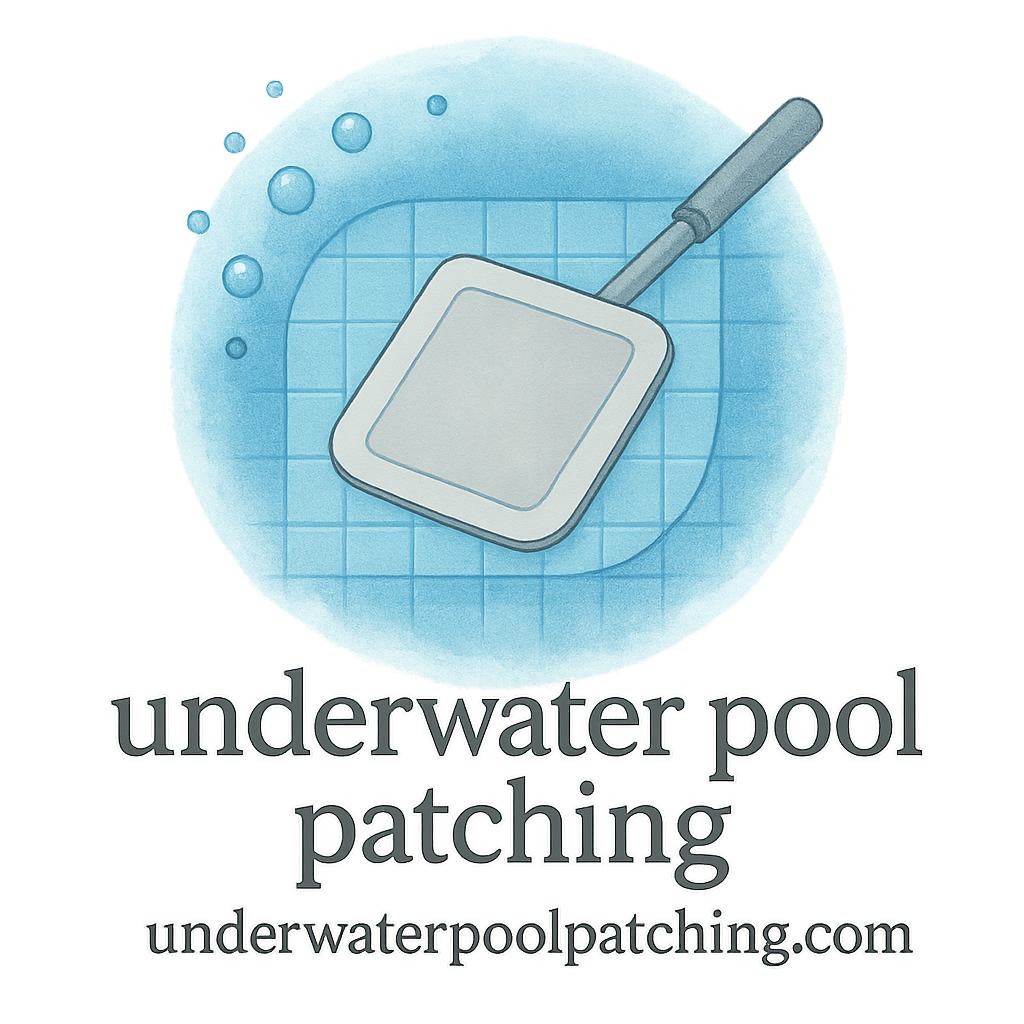Introduction
You patched your underwater pool—great! But now what? If you think the job ends with a successful patch, think again. Without regular upkeep, even the best patch can fail prematurely. The real secret to long-lasting repairs? Proper weekly and monthly maintenance. Let’s break it down so your pool stays perfect all season long.
Why Maintenance Matters After Underwater Pool Patching
Protecting Your Investment
Pool patching isn’t cheap—or quick. Once you’ve invested in professional repair techniques, you want those patches to last. Regular maintenance is the shield that guards your investment against future wear and tear.
Extending Patch Life
Consistent upkeep enhances the lifespan of the materials used in patching. Whether it’s epoxy-based patches or vinyl repairs, a solid maintenance plan prevents them from peeling, cracking, or eroding.
Weekly Maintenance Tasks
Keeping up with weekly pool chores ensures minor issues don’t spiral into costly problems.
1. Visual Inspection for Patch Wear
What to Look For
Every week, grab your goggles and check the patched area closely. Look for signs of fraying edges, discoloration, or detachment.
Tools You Might Need
A waterproof flashlight and a soft brush can help you see and gently test the patch. This ties into routine inspection & diagnosis, ensuring your patch stays solid.
2. Skimming and Surface Debris Removal
Why It’s Crucial Post-Repair
Leaves, bugs, and dirt might seem harmless, but when they settle on a patch, they can introduce bacteria or cause surface smoothing issues. Don’t underestimate your skimmer—use it every other day.
3. Water Chemistry Balancing
Protecting Your Patches with Proper pH
Water balance isn’t just for swimmer comfort—it protects the patch materials. An unbalanced pH can dissolve adhesives and weaken patch life.
Ideal Range:
- pH: 7.4–7.6
- Chlorine: 1–3 ppm
- Alkalinity: 80–120 ppm
Use a water test kit weekly. If you see recurring imbalances, it could be a sign of a deeper leak detection issue.

4. Cleaning Pool Walls and Floors
Avoiding Abrasions on Patch Materials
Use a soft-bristled brush, especially around patched zones. Harsh brushing can destroy even the best patch types and materials.
5. Checking Circulation and Filter Flow
Spotting Pressure Test Red Flags Early
Any noticeable change in flow or pressure may signal a hidden problem. A weekly check helps prevent filter clogs and aligns with solid pressure test protocols.
Monthly Maintenance Tasks
Let’s zoom out. These monthly tasks are like your pool’s checkup—more detailed, more thorough.
1. Deep Cleaning and Vacuuming
Even if your weekly skimming is on point, some debris always escapes. Manual or robotic vacuuming targets hidden corners and supports cost-saving efforts by preventing buildup that leads to damage.
2. In-depth Inspection of Patched Areas
Signs Your Patch Needs Attention
- Blistering or bubbling
- Mold growth
- Edge lifting
- Water clarity changes
Revisit inspection & diagnosis guides monthly to catch these before they worsen.
3. Equipment Performance Review
Pumps, Filters & Patch Compatibility
Patch adhesives can degrade if your system’s pressure is too high. Monthly, inspect pumps and filters and ensure they’re running within the recommended patching techniques.
4. Rechecking Pool Chemistry in Detail
Go beyond weekly test strips. Use lab-based test kits monthly for nitrate levels, calcium hardness, and TDS (Total Dissolved Solids). Chemical imbalance can affect patch durability over time.
5. Scheduled Maintenance Plan Updates
Keeping a Routine with Your Patching Schedule
Set reminders for when each patch was applied and what materials were used. Align this with your maintenance plan for long-term success.
Weekly vs Monthly: What’s the Real Difference?
Weekly tasks are quick and focused—think of them as brushing your teeth. Monthly tasks are the dentist visit. You need both. The weekly jobs keep things tidy, but the monthly ones dive deep to prevent failures and extra costs later.
Money-Saving Tips Through Routine Maintenance
Skipping maintenance today can lead to re-patching tomorrow—which means more money down the drain. Align with these money-saving strategies:
- Subscribe to a maintenance plan
- Stick to a budget
- Use multi-purpose tools to reduce repair expenses
Must-Have Tools for Efficient Maintenance
Here’s what should be in your pool toolkit:
- Waterproof flashlight
- Telescopic pole with brush and skimmer attachments
- Test strips & liquid kits
- Soft-bristle pool brush
- Robotic vacuum (for deep cleaning)
Having the right tools makes patch maintenance easier, quicker, and more precise.
Common Mistakes to Avoid
- Scrubbing too hard on patch areas
- Forgetting to test water chemistry weekly
- Using incompatible cleaning chemicals
- Skipping routine diagnosis
- Ignoring patch edges—where failure often begins
Check our edge finish tips to ensure no peeling or lifting happens unnoticed.
When to Call the Pros
If a patch peels up repeatedly or leaks return even after testing, it’s time to call in the experts. Don’t wait. Browse local specialists or visit Underwater Pool Patching for professional help. Better to spend a little now than a lot later.
Conclusion
Maintaining your patched underwater pool isn’t rocket science—but it does require discipline. By dividing tasks into weekly and monthly to-dos, you can stay on top of problems, protect your investment, and extend the life of every patch. Use this guide to keep things simple, stress-free, and cost-effective.
FAQs
1. How long do underwater pool patches last with regular maintenance?
With proper care, patches can last several years. Regular checks and balanced chemistry help extend that lifespan significantly.
2. What happens if I skip monthly maintenance?
Small issues can grow unnoticed, leading to leaks or patch failure. Monthly maintenance acts as an early warning system.
3. Can I use regular cleaning chemicals on patched areas?
Only if they’re compatible with your patch materials. Always read the label or consult a pro.
4. Are robotic vacuums safe for patched pools?
Yes, but avoid abrasive ones. Choose a model designed for delicate surfaces or manual cleaning near patch zones.
5. Do I really need both weekly and monthly tasks?
Absolutely. Skipping one compromises the other. Weekly tasks prevent buildup, while monthly tasks check deeper issues.
6. What’s the best time to inspect patched areas?
Do it in the morning when water is calm and sunlight helps visibility. Always inspect after heavy use or storms.
7. Where can I get help with patching or diagnostics?
Visit Underwater Pool Patching for expert guidance, cost-saving strategies, and repair options tailored to your pool.


